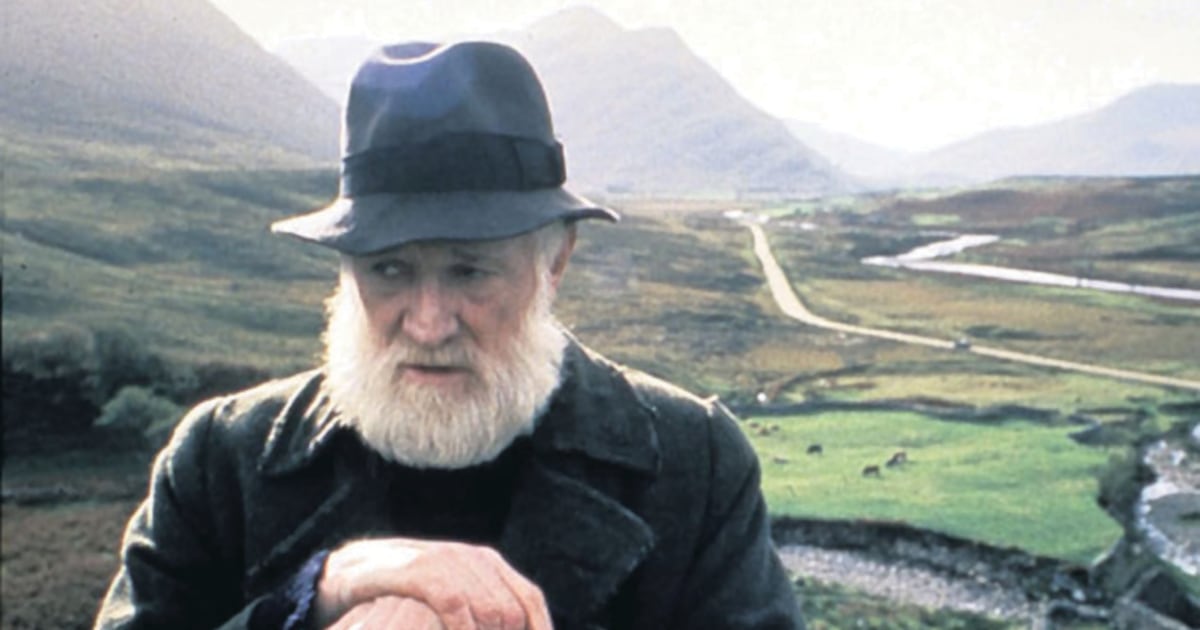Politics
Exhibition Reveals Depth of Richard Harris’s Life and Career

A new exhibition at the Hunt Museum in Limerick delves into the lesser-known aspects of actor Richard Harris’s life, showcasing a multifaceted individual beyond the “hellraiser” persona. The display features personal letters, rare photographs, sporting memorabilia, and other artifacts that highlight his varied interests and influences.
Richard Harris was born on October 1, 1930, in Limerick city and became internationally recognized for his diverse roles, including that of Albus Dumbledore in the first two Harry Potter films. Growing up in Overdale, a large Edwardian house on Ennis Road, he spent summers in Kilkee, where he displayed his athletic talent by swimming across the bay. Harris was also a competitive player in racquets, winning the Tivoli Cup, and showed promise in rugby while attending St. Philomena’s Junior Jesuit School and later Crescent College. His aspirations for a rugby career were hindered by a bout of tuberculosis during his teenage years.
While recovering, Harris discovered the works of authors like James Joyce, Samuel Beckett, and Dylan Thomas. He later credited this period of reading as pivotal to his future, stating, “The luckiest thing that ever happened to me … if I hadn’t started to read, I would probably be selling insurance now.” His love for literature laid the foundation for his acting career, particularly after enrolling at the London Academy of Music and Dramatic Art.
Harris gained critical acclaim for his performance in Behan’s The Quare Fellow in 1956, showcasing his powerful presence, especially through his rendition of “The Auld Triangle.” His breakthrough role in This Sporting Life (1963) earned him an Oscar nomination, where he portrayed an ex-miner turned successful rugby league player. He later starred in notable films such as Gladiator, Camelot, and The Field (1990), which garnered him a second Oscar nomination for his portrayal of Bull McCabe. The crown he wore as King Arthur in Camelot and his Golden Globe Awards are prominently featured in the exhibition.
In the late 1950s, Harris starred in the West End production of JP Donleavy’s novel The Ginger Man as Sebastian Dangerfield. However, the Dublin run faced censorship by the Catholic Church after just three nights, prompting Harris to respond, “I’m sending the script to the Vatican. I don’t deny there is vulgarity in it but that doesn’t stop it from being a fine play.”
Beyond acting, Harris was also a talented singer, poet, and director. His poetry collection, I, In the Membership of My Days, published in 1973, reflects on themes of childhood, fame, memory, family, and mortality. In the book, Harris expressed a more introspective side, stating, “I am known as someone who drinks too much, womanises too much, raises too much hell. But this book shows how I have fooled them. I have always played a double game, one in public and the other in private.”
The exhibition includes previously unseen film footage and interview clips that shed light on his creative process, accompanied by annotated scripts and personal writings. Throughout his life, Harris faced numerous challenges, including overcoming dyslexia. Despite these struggles, he maintained a sense of humor, often reflecting on his experiences with a quote: “I often sit back and think, I wish I’d done that, and find out later that I already have.”
For over 28 years, Harris resided in the Savoy Hotel in London, where his room was later renamed the Richard Harris Suite. This space served as a sanctuary where he entertained friends and conducted interviews. In August 2002, he was diagnosed with Hodgkin’s disease, passing away on October 25, 2002, at the age of 72. According to the Savoy archivist, as he was taken from the hotel shortly before his death, he humorously remarked to diners, “It was the food!”
Following his passing, Harris’s three sons, Jared, Damian, and Jamie, donated their father’s extensive archive to University College Cork, preserving a significant cultural legacy. The exhibition “From Dickie to Richard – Richard Harris: Role of a Lifetime” is a collaboration between the Hunt Museum, the Harris family, and University College Cork, running until November 16, 2025. This showcase offers an intimate reappraisal of an enigmatic life that continues to resonate with audiences. For more details, visit www.huntmuseum.com.
-

 Top Stories3 months ago
Top Stories3 months agoTributes Surge for 9-Year-Old Leon Briody After Cancer Battle
-

 Entertainment4 months ago
Entertainment4 months agoAimee Osbourne Joins Family for Emotional Tribute to Ozzy
-

 Politics4 months ago
Politics4 months agoDanny Healy-Rae Considers Complaint After Altercation with Garda
-

 Top Stories4 months ago
Top Stories4 months agoIreland Enjoys Summer Heat as Hurricane Erin Approaches Atlantic
-

 World5 months ago
World5 months agoHawaii Commemorates 80 Years Since Hiroshima Bombing with Ceremony
-

 Top Stories3 months ago
Top Stories3 months agoNewcastle West Woman Patricia Foley Found Safe After Urgent Search
-

 Top Stories5 months ago
Top Stories5 months agoFianna Fáil TDs Urgently Consider Maire Geoghegan-Quinn for Presidency
-

 World5 months ago
World5 months agoCouple Convicted of Murdering Two-Year-Old Grandson in Wales
-

 World5 months ago
World5 months agoGaza Aid Distribution Tragedy: 20 Killed Amid Ongoing Violence
-

 World5 months ago
World5 months agoAristocrat Constance Marten and Partner Convicted of Infant Murder
-

 Top Stories4 months ago
Top Stories4 months agoClimbing Errigal: A Must-Do Summer Adventure in Donegal
-

 Top Stories4 months ago
Top Stories4 months agoHike Donegal’s Errigal Mountain NOW for Unforgettable Summer Views









